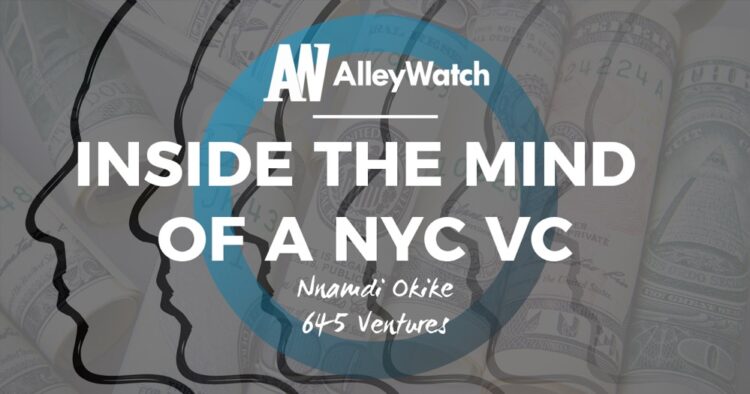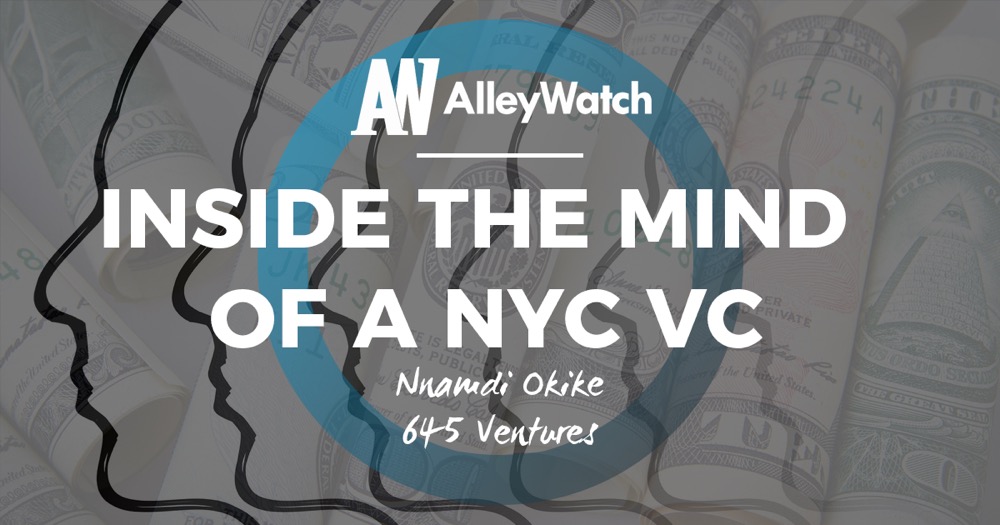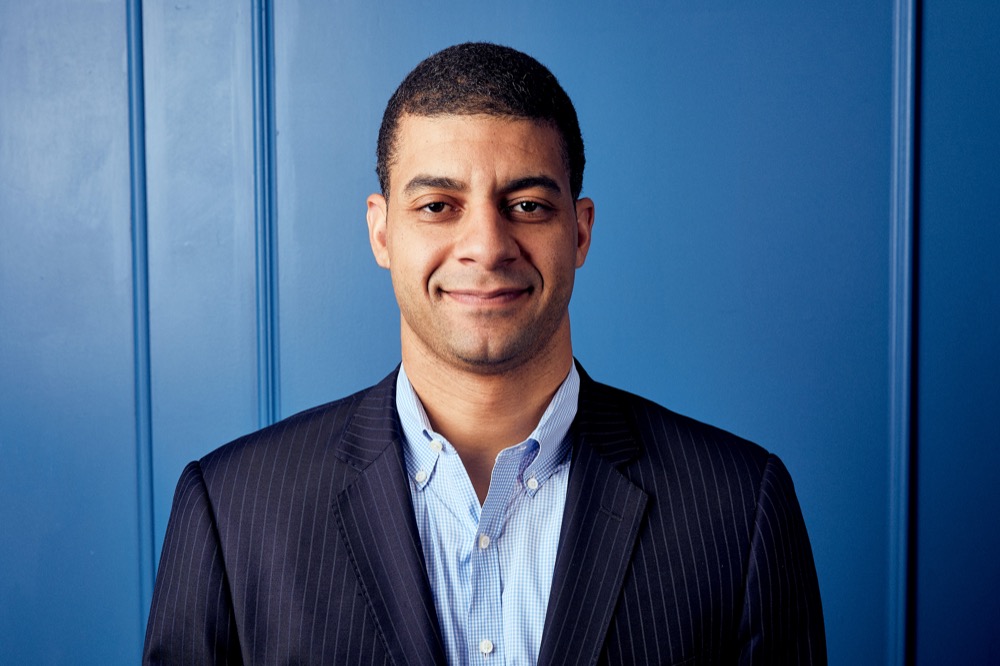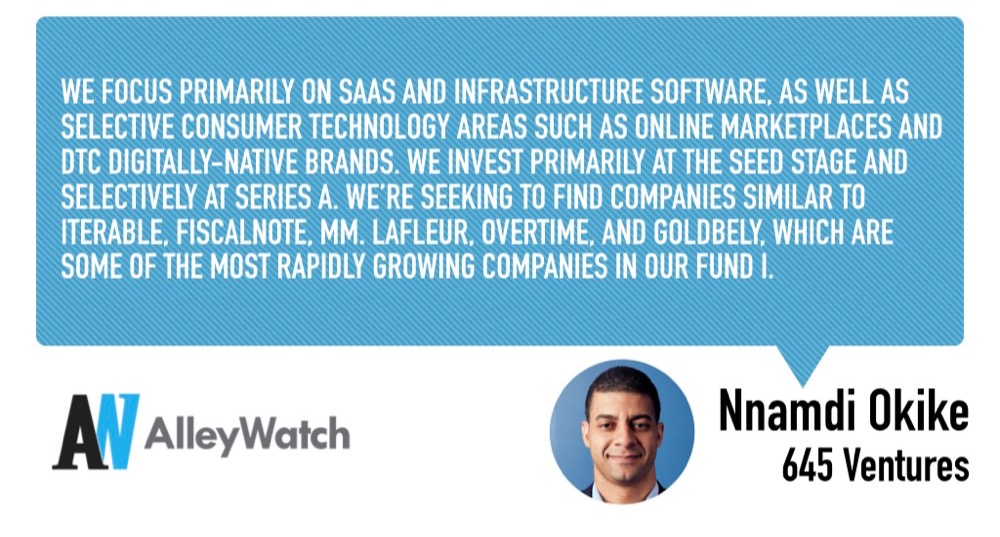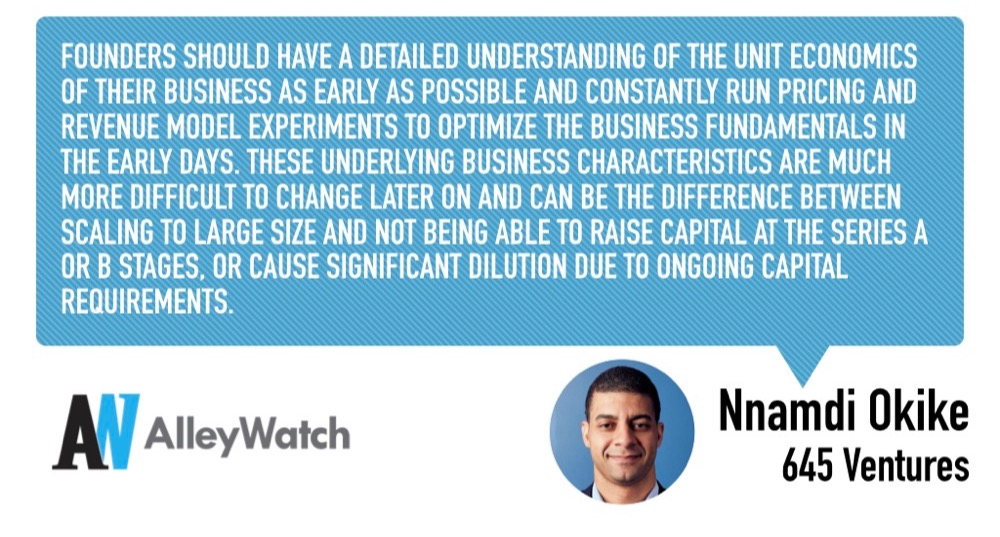Welcome back to Inside the Mind of an NYC VC, a highly acclaimed series at AlleyWatch in which we speak with New York City-based Venture Capitalists. In the hot seat this time is Nnamdi Okike, General Partner at 645 Ventures, a seed stage NYC venture firm launched in 2013. Currently investing out of its second fund, which just closed in August at $40M, 645 Ventures has made over 30 companies including Nanit, Hullabulu, Eden Health, Fly Labs, and Iterable.
Nnamdi joined us to discuss his start in venture, 645’s latest fund, the firm’s metric and data-driven approach to investing, how 645 serves as a true partner to founders, actionable tips and guidance for founders to successfully navigate the funding process, and much, much more…
If you are a NYC-based VC interested in participating in this series, please send us an email. We’d love to chat. If you are interested in sponsoring this series that showcases the leading minds in venture in NYC, we’d also love to chat. Send us a note.
Reza Chowdhury, AlleyWatch: Please tell us a little bit about your background and how you started in venture.
Nnamdi Okike, 645 Ventures: In college at Harvard in the early 2000’s, I became fascinated by the growth of the Internet, and the explosion in technology entrepreneurship that resulted from it. I audited classes at MIT’s Sloan School, taking a course that was taught by the founders of Battery Ventures. That’s where I first learned about venture capital.
Coming out of college, I got my start as an analyst at Insight Venture Partners here in New York.
At the time, Insight was a young VC firm in the nascent NYC tech market. I loved the work, and in particular, loved having the opportunity to work with entrepreneurs who were building innovative companies and trying to change the world. That experience turned into more than eight years at Insight Venture Partners, where I learned the venture business from very smart investors. Over that time, I also had the chance to see Insight grow from a moderately-sized VC firm to a global firm managing over $15 billion of capital.
After eight years at Insight, as a result of structural changes occurring in the VC market, my colleague Aaron [Holiday] and I decided to co-found a new firm, focused on applying a data-driven sourcing and evaluation model to the early stage.
It’s an exciting time at 645 Ventures. You just announced a brand new fund last month. Please tell us about that.
Our $40m Fund II is the next step toward establishing our firm as a key player in early-stage investing, and is a continuation of the investment approach we’ve applied over the last four years. Our new fund puts us in a position to lead seed rounds, allowing us to work more closely with founders who aim to build growth stage companies. We proved this model out in Fund I, and we’re scaling it in Fund II.
We started small and very scrappy. We designed our firm with the mission of serving exceptional entrepreneurs, and in particular to serve a new generation of founders who are looking for a hands-on VC firm who can help them scale from seed to Series A.
We’re excited to be scaling up as an institution ourselves. We’re happy to have brought on several new investors to partner with us to build a lasting institutional venture fund at the early stage. These include institutional investors Princeton University, the Mellon Foundation, and Spelman College.
 How are your role and responsibilities different in managing a $40M fund than managing Fund I fund, which closed at $8M in 2014?
How are your role and responsibilities different in managing a $40M fund than managing Fund I fund, which closed at $8M in 2014?
The roles and responsibilities of our team are very similar to those which we have for Fund I: identify exceptional companies that reach large exits and return our fund. The only major difference between Fund I and II is that we are able to write larger checks. We are therefore able to lead more rounds, and lean into companies a lot more than we did in Fund I. We also have the resources to work closely with founders on their journey to build category-defining companies.
What can founders expect with this new fund?
In Fund II, we will continue to apply what we describe as a resource-intensive investment approach. We apply a more concentrated portfolio strategy than many seed funds, making less investments per fund and bringing more resources to bear with each investment. Our value-add operation, 645 OPS, is led by Dessy Levinson and focuses on helping companies in the areas of strategic customer and partner acquisition, follow-on fundraising preparation, financial metrics tracking and optimization, M&A and IPO planning, and brand and story. We are continuing to scale this operation, tailoring its focus to the demands of our founders and concentrating on areas that have the most material impact.
How’s fundraising different as a venture capitalist than it is as an entrepreneur?
Whether you’re fundraising for a new fund or a new startup, your goal is to identify and attract investors who can add value to your company, are aligned with your firm’s mission and have a long-term investment horizon. Fundraising is about finding the true believers, not convincing the skeptics. This is a key commonality between raising capital as a VC and as a founder.
One advantage of raising as a VC is the ability to be able to pitch diversification – even relatively concentrated funds like ours will make up to thirty portfolio investments. Startup founders cannot offer as much diversification. The founders must go “all-in” on a startup idea, and investors must find diversification elsewhere.
One advantage of raising as a founder of a product company is the ability to make the product you are selling tangible and real to the investor. If you’re selling a consumer product, for example, you can demo the physical product, and investors can see for themselves whether it works.
As a VC, you are pitching a service operation that has the ability to identify and execute great investments. Especially for new firms that don’t yet have a track record, it’s more difficult for investors to determine whether the service operation will work. Furthermore, given the amount of time it takes for early-stage investments to come to fruition, it may not be several years before the investors in a VC firm determine whether the firm is any good or not. This is one reason why prior track records are weighted so heavily in evaluating new VC firms.
Do you consider LPs on the basis of what strategic value they could potentially offer to portfolio companies?
Yes. Our LPs are true partners in our firm, many of whom look for ways to enable the firm and portfolio success through their expertise and networks. We’re very happy to have a group of very accomplished executives in technology, business, and finance as LPs in Fund II. They can add value to portfolio companies in terms of making introductions to potential customers and partners, as well as leveraging their experience to provide valuable advice to our founders on key aspects of scaling their businesses.
Is there a specific investment thesis that 645 deploys? Where is the firm’s sweet spot?
We focus primarily on SaaS and infrastructure software, as well as selective consumer technology areas such as online marketplaces and DTC digitally-native brands. We invest primarily at the seed stage and selectively at Series A. We’re seeking to find companies similar to Iterable, FiscalNote, MM. LaFleur, Overtime, and Goldbely, which are some of the most rapidly growing companies in our Fund I.
We describe our sweet spot as post-product-launch but before product-market fit. We are looking for businesses that have low capital requirements, the ability to scale rapidly, and inherent technology or brand moats. Combined with our networks, we use proprietary software and analytics to augment our ability to identify early-stage companies and to help our portfolio companies reach large scale.
What are you excited about right now, from an investment standpoint?
We continue to be excited about the continued transformation of many industry verticals, across all aspects of the business enterprise, through digitization and software automation. Robert Smith, Co-Founder of Vista Equity, has described this transformation as the Fourth Industrial Revolution, where software combined with real-time data sources provide superior experiences for the customer. We are seeking businesses that are applying software to automate industry verticals such as retail, financial services, real estate, and healthcare. Fund I investments that fit this theme include FiscalNote, Eden Health, and Thinknum.
We also continue to pursue infrastructure software companies that enable firms to better manage, secure, and automate technology systems, networks, and devices. Areas of focus within infrastructure include security, data storage, and management of connected devices. As an example, our first investment in Fund I was StorageOS, a provider of enterprise storage software for the container market.
Finally, we continue to focus on companies that leverage the power of the Internet to connect buyers and sellers and bring greater selection, transparency, and convenience to markets. Fund I investments that fit this these include Goldbely and Fat Lama.
What do you need to see from teams, both qualitatively and quantitatively, in order to invest?
We look for four key characteristics in the companies we invest in:
- A founding team that has a combination of deep understanding of its target market and purity of motivation in seeking to solve a major market pain point;
- A large eventual market opportunity at scale, ideally in the multiple billions of dollars;
- A scalable business model, reflected by low capital expenditure requirements and (ideally) recurring revenue;
- A competitive moat that can be created around the business by leveraging factors such as Moore’s Law, network effects, or supply chain disintermediation.
What metrics do entrepreneurs overlook or not place enough emphasis on that are important to consider when you are evaluating investment merit of a business?
We find that some early-stage founders may not place enough emphasis on the underlying characteristics of the business model, specifically gross margin, churn rate, percentage recurring revenue, and efficiency of sales and marketing model. This is understandable because they are often focused on getting to product-market fit in the early days. However, the quality of business model is the key determinant of a company’s ability to scale profitably over the long term and has a huge impact on future capital needs and founder dilution.
As an example, Byron Deeter of Bessemer Venture Partners has shown in his 10 Laws of Cloud presentation that a 1% improvement in monthly revenue churn can increase market cap at exit by $100 million. He has also shown that having a 1-year CAC payback vs. a 2-year CAC payback can result in more than $100 million additional cash burn over a five-year period for the company with the longer payback on customer acquisition cost.
These statistics and others support the argument that founders should have a detailed understanding of the unit economics of their business as early as possible and constantly run pricing and revenue model experiments to optimize the business fundamentals in the early days. These underlying business characteristics are much more difficult to change later on and can be the difference between scaling to large size and not being able to raise capital at the Series A or B stages, or cause significant dilution due to ongoing capital requirements.
What can entrepreneurs do to ensure that the relationship between the firm and companies is fruitful post investment?
We love to work with founders who follow a practice articulated by Jeremy Levine of Bessemer in an interview on the 20 Minute VC: tell us the bad news immediately, and we can wait to hear good news until you’re ready to share it. Because we aim to be a trusted and valuable resource for our companies, we ask our founders to share their challenges so that we can help them. We seek transparency from our founding teams, and we reciprocate that transparency by being straightforward and honest with our founders. We also commit to being available whenever our founders need us.
What are some things that you repeatedly see early-stage companies and founders struggle with?
We often see early-stage software founders struggle with imagining the full scope of their customers’ journey and building an effective sales process around it. Many founders have a theoretical understanding/belief of what their product should be worth. However, validating that the customer sees that value, and then building a sales process to unlock that value, can be a major challenge. We work closely with companies to help founders analyze the customer journey and build sales operations around it.
Who do you admire in the startup world and why?
I am a big fan of the founders of Airbnb. I admire them for their resiliency in not giving up in the early days, when no investors would fund the business. I admire them for the ethical, mission-driven way in which they build their business. I also admire them for their desire to bring the world together through travel. Brian Chesky describes Airbnb’s mission as enabling “a world where every one of us can belong anywhere”, and I admire the power of that vision and how it is impacting the world.
What’s your favorite restaurant in the city?
One of my many favorites is Avra Estiatorio at 48th Street.
What’s the last book you read?
I have been reading two great books. The first is “The Culture Code: The Secrets of Highly Successful Groups” by Daniel Coyle. It is an awesome book and how the best organizational cultures are created, and what makes them tick. The second is “Money Masters of Our Time” by John Train, which is an excellent text that describes the investment strategies of some of the best investors of the last fifty years.
What’s your favorite fall activity in NYC?
I love biking in Central Park, and also on the river path along the Hudson River.
Do you think the New York Giants have what it takes to handle Tom Brady another Super Bowl loss this year?
Not a chance. Tom Brady is the GOAT and the Giants really have no shot.


